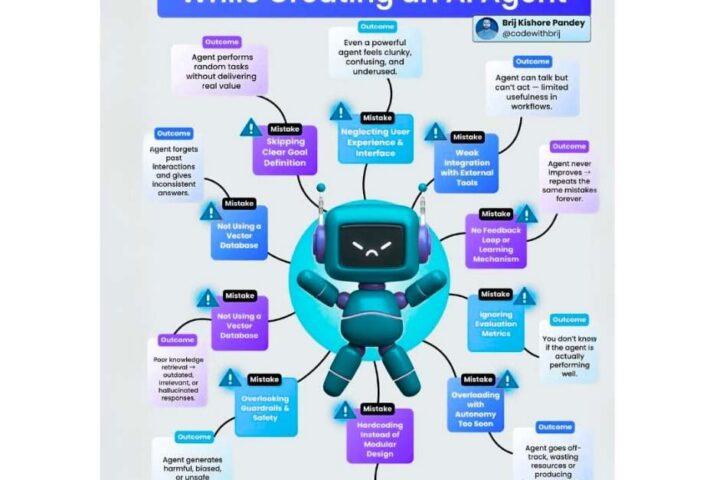Creating a brand identity is far from an easy process. From defining your core values to selecting a color scheme and typography that matches your style, there is a lot to consider. Yet, a strong brand identity can resonate with your customers, driving sales and boosting engagement – meaning that incorporating your identity into your website is vital.
To make the process a whole lot quicker for yourself, we recommend you use one of the online website design systems. A platform like this will help you speed up the process, giving you access to drag and drop tools, hundreds of templates, and suggestions to make the process of creating a website for your business a breeze.
In this article, we’ll be discussing the importance of creating a website for your brand, as well as outlining the four steps you should follow to ensure your brand identity is well-incorporated into the site.
Let’s get right into it.
Why Is it Important to Make a Website For Your Brand?
In this digital age, if your business doesn’t have a website, you’ll be sticking out like a sore thumb. A website is an online space where customers can go to find out information about your brand, the team that works for the company, and the values they stand for. A customer will also be able to find all of the products that you offer, as well as reviews of your items.
Considering that 55% of users will actively search online for reviews before making a purchase, a website is quickly becoming one of the central ways that you can drive sales in your business. One that has a strong identity that’s cohesively applied across all pages looks professional and inspires trust.
Creating a website brings the three following benefits to your business:
- Visibility
- Credibility
- Organic Traffic
Let’s break these down further.
Visibility
Creating a website for your business ensures that when someone types the name of your business into a search engine, they get a direct result. Instantly, by shifting your business online, you’ll be able to access a huge audience that was previously barred from connecting with you.
Instead of focusing on local clients in your area, a website will help your business expand, allowing you to access potentially an international audience of customers. Far surpassing the barrier of geographical location, with your own website, you’ll be well on your way to driving sales and growing your business.
Additionally, by using a push-notification feature, you’ll be able to ensure that your customers get an alert when you launch a time-sensitive event. For example, if you’re having a flash sale, those that have subscribed to your notifications will get an alert delivered directly to them, prompting them to reopen your website and have a browse.
Credibility
An incredible 56% of consumers state that they don’t trust a business if it doesn’t have a website. The reasons behind this fact come down to transparency, with a website acting as a central hub of information that can persuade a customer to put their trust in your business. With features like online reviews and direct recommendations, a website tells the world that you’re a real business with a verified customer base and sales to back it up.
If you’re looking for an easy way to prove to the world that your business is credible, filling your website with reviews and recommendations can be a great way of doing so. By creating a website that has a strong brand identity and clear purpose, you’ll also be able to give your customers further insight into what sort of company you are through your website’s presentation.
Organic Traffic
Search Engine Optimization (SEO) is an element of your website that you can continuously hone, boosting your position in the Search Engine Results Pages (SERPs) by focusing on your strategy. By ensuring that all your pages are optimized, you’ll be on the way to creating a stronger site.
With this, your rank in the SERPs will skyrocket, moving you closer to that number #1 spot for your niche. As you rise in the rankings, the probability of a user clicking on your site also rises, ensuring that you start to gain organic traffic to your website.
Instead of having to launch advertising campaigns, your business will suddenly start to gain an influx of natural clicks. Article and blog content on your website that’s related to your niche can help you expand your audience, acquire new leads, and continue on a pathway to success.
How Do I Create A Website That Reflects My Brand Identity?
A website is the first impression that many customers will have of your business. Due to this, creating a memorable site that screams your brand identity is vital.
One of the central branding strategies that you should be following is to incorporate your identity across every single page of your site. We understand that doing that is much easier said than done.
To guide you along the path to total incorporation across your pages, we’ve designed the following four steps:
- Define your identity
- Design a color scheme and logo
- Make Your Landing Page Count
- Show Your Colors on Your About Us Page
Let’s break down these further.
Define Your Identity
A brand identity is a style with which you do everything, with a cohesive identity ensuring that consumers can recognize your business wherever they come across your brand. From the typography you use to the color palette that becomes your go-to, everything on your site contributes to your identity.
If you’re looking to define your own identity, we recommend that you start with what your company stands for. What would you suggest is the personality of your brand – are you fun and approachable or sleek and professional?
Try and answer the following questions:
- What are your brand values, what do you believe in and why?
- If your brand was a person, how would they act?
- Do you associate any colors with your brand, what are they and why?
Questions like these can help you better understand your own brand, building up an idea of what you think your brand is. From there, with a few key characteristics and some initial ideas, you’ll be able to move on to the next step.
Design a Color Scheme, Typography Format, and Logo
Color is one of the most important aspects of your brand, with users automatically associating certain colors with iconic brands. You want to make sure that the colors that you’re using align with your mission. Here is a general guide to what different colors are normally interpreted as on a website:
- Red – Passion, Energy, Excitement, Loud
- Orange – Youthful, Energetic, Friendly, Playful
- Yellow – Cheerful, Positive, Happy, Accessible
- Green – Peaceful, Nature, Prosperity, Calming, Adaptable
- Blue – Calming, Trustworthy, Approachable
- Purple – Royalty, Luxury, Style
- Pink – Feminine, Kindness, Warmth
- Black/White – Stylish, Modernist, Classic
Be sure to select colors and your palette based on what your brand identity aligns with most. The same then goes for typography, with different forms of writing having a different ‘personality’ or general effect that they give off.
When selecting typography, be sure to move through the five different types to find one that you enjoy. These five are serif, sans serif, script, display, and monospaced – with variations of a particular style within each of these categories.
Once you’ve decided on the font and color palette of your website, you’ll have a much easier time creating your logo. You can either design one yourself, give your font and colors to a designer with some information about your brand to see what they make, or give some sketched-out ideas to a designer.
No matter how you go about creating your logo, be sure it’s something that reflects your business. Logos are often one of the first things a customer will see, so make sure it fits in nicely with that atmosphere your website is going for.
Landing Page
A landing page is the homepage of your business’s website and therefore needs to make a great impression. To make sure that a user instantly understands your brand identity, you should make sure to employ your color scheme and typography on this page and all other pages of your site.
When filling out the copy for your landing page, be sure to keep things short and to the point. Typically, start with a one-sentence or a few-word heading that summarizes your business. Next, you can move down to a subtitle where you explain a little bit more about what you do. Keep this directly aligned with your brand identity – what do you want people to know right off the bat?
Depending on what your business is, you can then either follow this with reviews, products, or whatever you think fits best into your brand identity. Do you want to get straight to the point and show products or do you want potential customers to know more about your story first?
Always refer back to your core brand values; your identity should shine through on this first page.
About Us
One final touch you can add to your website to make sure that your brand identity shines through is to include an About Us page. This will be a central location where you can actively share your story, discuss the people behind the brand, and display your core values for the world to see.
Especially if your brand is set up for a particular cause, this is the perfect location to share some of your brand personality, sharing stories and outlining who you are as a company. This page will act as the center of your brand identity, explaining the values behind the decisions you’ve made.
Considering that 86% of consumers say that authenticity is important when supporting a brand, this page will demonstrate to the world that you’re a serious company that has a central mission.
The About Us page will bring together your brand identity, color scheme, typography, values, mission, and everything else that makes you, you!
Final Thoughts
When creating a website, every choice you make will be driven by your brand identity. Behind the typography, the color scheme, and the words you populate the site with will be decisions based on your branding.
By working out who your brand is and what they stand for, you’ll have the key to creating a strong brand identity across everything you do. Going beyond designing your website, you can carry this identity into your social media accounts, email templates, and anything that your brand uses online.
By creating a strong brand identity on your website, you’ll be putting your best foot forward towards enticing customers, displaying authenticity, and generating organic leads that convert.









